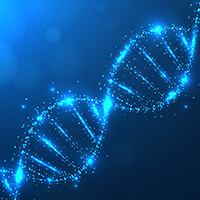 Smart Citations
Smart CitationsSee how this article has been cited at scite.ai
scite shows how a scientific paper has been cited by providing the context of the citation, a classification describing whether it supports, mentions, or contrasts the cited claim, and a label indicating in which section the citation was made.
DNA damage and repair in differentiation of stem cells and cells of connective cell lineages: A trigger or a complication?
The review summarizes literature data on the role of DNA breaks and DNA repair in differentiation of pluripotent stem cells (PSC) and connective cell lineages. PSC, including embryonic stem cells (ESC) and induced pluripotent stem cells (iPSC), are rapidly dividing cells with highly active DNA damage response (DDR) mechanisms to ensure the stability and integrity of the DNA. In PSCs, the most common DDR mechanism is error-free homologous recombination (HR) that is primarily active during S phase of the cell cycle, whereas in quiescent, slow-dividing or non-dividing tissue progenitors and terminally differentiated cells, error-prone non-homologous end joining (NHEJ) mechanism of the double-strand break (DSB) repair is dominating. Thus, it seems that reprogramming and differentiation induce DNA strand breaks in stem cells which itself may trigger the differentiation process. Somatic cell reprogramming to iPSCs is preceded by a transient increase of the DSBs induced presumably by the caspase-dependent DNase or reactive oxygen species (ROS). In general, pluripotent stem cells possess stronger DNA repair systems compared to the differentiated cells. Nonetheless, during a prolonged cell culture propagation, DNA breaks can accumulate due to the DNA polymerase stalling. Consequently, the DNA damage might trigger the differentiation of stem cells or a replicative senescence of somatic cells. Differentiation process per se is often accompanied by a decrease of the DNA repair capacity. Thus, the differentiation might be triggered by DNA breaks, alternatively the breaks can be a consequence of the decay in the DNA repair capacity of differentiated cells.
Supporting Agencies
University of LatviaHow to Cite
PAGEPress has chosen to apply the Creative Commons Attribution NonCommercial 4.0 International License (CC BY-NC 4.0) to all manuscripts to be published.









